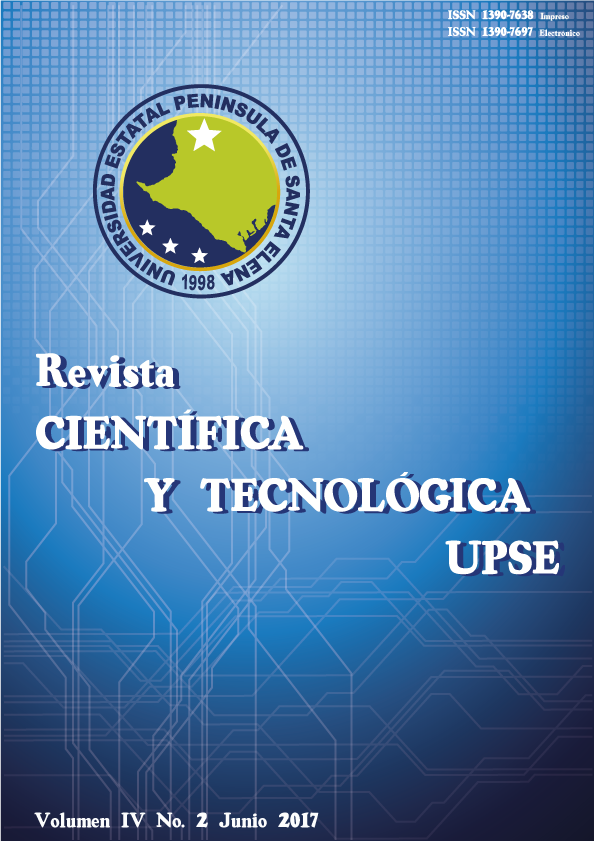Life cycle assessment as a toolfor the evaluation of the environmental behavior of a process. Case of study electrical central of fuel oil 110 kv in the province of Granma -Cuba
DOI:
https://doi.org/10.26423/rctu.v4i2.225Keywords:
life cycle assessment (LCA), distributed generation of electricity, environmental impactAbstract
The electricity generation process from fossil fuels its source of environmental pollution, being a current concern at developing countries. The objective of the present work was to evaluate the environmental impact of the distributed electricity generation in an 110 kV oil fuel power station using the Life Cycle Assessment method to determinate improvements in the process. The Life Cycle Assessment (LCA) was perform according to the requirements established in the NC ISO 14040: 2009, using Eco-indicator 99 with software Sima Pro 7.1. The environmental impacts were evaluate starting from an inventory analysis in each stage of the process, accounting the inputs and outputs of raw materials, energy and emissions to the air, water and soil; a flow diagram of the process was generated for the assessment. From the analysis of the flows, it was determined that the condemnatory parameters in the case of effluents, is only met for the pH and electrical conductivity, in the case of air emissions is violated with on the NO2 and SO2. The results, show that the stage with the greatest contribution is concentrated in the generation area, and the most aggressive products to the environment are the consumption of fuel oil (human health 80 %, ecosystem 53 % and natural resources 95 %) and the residual product of the cleaning of the exploitation materials (35 % in the case of the ecosystem).
Downloads
References
DE LA CONCEPCIÓN, M. (2011, April). Aplicación del análisis de ciclo de vida (ACV) para la evaluación del impacto ambiental asociado a la generación de energía eléctrica. In IV Conferencia Internacional de Análisis de Ciclo de Vida, CILCA, Coatzacoalcos, Veracruz, México( pp. 462-483).
Cherubini, F., & Strømman, A. H. (2011). Life cycle assessment of bioenergy systems: state of the art and future challenges. Bioresource technology, 102(2), 437-451.
Zimmermann, T. (2013). Parameterized tool for site specific LCAs of wind energy converters. The International Journal of Life Cycle Assessment, 18(1), 49-60.
Huang, I. B., Keisler, J., & Linkov, I. (2011). Multi-criteria decision analysis in environmental sciences: ten years of applications and trends. Science of the total environment, 409(19), 3578-3594.
Cluzel, F., Yannou, B., Millet, D., & Leroy, Y. (2014). Exploitation scenarios in industrial system LCA. The international journal of life cycle assessment, 19(1), 231-245.
Bok, Y. J., Tae, S. H., Kim, T. Y., & Yang, K. H. (2015). The Development of Concrete Life Cycle Assessment System. In Applied Mechanics and Materials (Vol. 752, pp. 715-719). Trans Tech Publications.
Sánchez, O. J., Cardona, C. A., & Sánchez, D. L. (2012). Análisis de ciclo de vida y su aplicación a la producción de bioetanol: Una aproximación cualitativa. Revista Universidad EAFIT, 43(146), 59-79.
Cherubini, F. (2010). GHG balances of bioenergy systems–Overviewof key steps in the production chain and methodological concerns. Renewable Energy, 35(7), 1565-1573.
RODRÍGUEZ, B. (2011, April). Eco-Speed, a New Life Cycle Impact Assessment Methodology for Latin American Countries. In IV Conferencia Internacional de Análisis de Ciclo de Vida, CILCA, Coatzacoalcos, Veracruz, México(pp. 795-814).
Cedeño, E. A. L., López, B. S., & Bastida, L. (2006). Metodología para la determinación de los impactos ambientales en procesos productivos. Revista Ciencias Técnicas Agropecuarias, 15(3), 60-64.
Von Blottnitz, H., & Curran, M. A. (2007). A review of assessments conducted on bio-ethanol as a transportation fuel from a net energy, greenhouse gas, and environmental life cycle perspective. Journal of cleaner production, 15(7), 607-619.
Wardenaar, T., van Ruijven, T., Beltran, A. M., Vad, K., Guinée, J., & Heijungs, R. (2012). Differences between LCA for analysis and LCA for policy: a case study on the consequences of allocation choices in bio-energy policies. The International Journal of Life Cycle Assessment, 17(8), 1059-1067.
NC. (2009). Gestión ambiental. Análisis del Ciclo de Vida. Principios y Estructura. NC ISO 14040: 2009. Habana, Cuba: Oficina Nacional de Normalización. 19 p.
Rieradevall, J., Doménech, X., Bala, A., & Gazulla, C. (2000). Ecodiseño de envases, el sector de la comida rápida. Elisava Editions.
Lozano, R. G. (2013). Ecodiseño y envase. Infopack: packaging & etiquetaje industrial, diseño, innovación & tendencias, (193), 4-7.
NC. (2014). Calidad del aire –Contaminantes –Concentraciones máximas admisibles y valores guías en zonas habitables. NC 1020: 2014. Habana, Cuba: Oficina Nacional de Normalización.
García, A. C. (2011). Los Índices de Calidad del Aire: Alcances y Limitaciones. Conciencia Tecnológica, (42), 74-76.
NC. (1999). Vertimiento de aguas residuales a las aguas terrestres y al alcantarillado especificaciones. NC 27:1999. Habana, Cuba: Oficina Nacional de Normalización.
Rodríguez Pérez, B., Fernández Rodriguez, M., & Fernández Ocampo, N. (2014). Análisis del ciclo de vida de la generación distribuida en Cienfuegos. Ingeniería Energética, 35(3), 274-285.
Downloads
Published
Issue
Section
License
El titular de los derechos de autor de la obra, otorga derechos de uso a los lectores mediante la licencia Creative Commons Atribución-NoComercial-CompartirIgual 4.0 Internacional. Esto permite el acceso gratuito inmediato a la obra y permite a cualquier usuario leer, descargar, copiar, distribuir, imprimir, buscar o vincular a los textos completos de los artículos, rastrearlos para su indexación, pasarlos como datos al software o usarlos para cualquier otro propósito legal.
Cuando la obra es aprobada y aceptada para su publicación, los autores conservan los derechos de autor sin restricciones, cediendo únicamente los derechos de reproducción, distribución para su explotación en formato de papel, así como en cualquier otro soporte magnético, óptico y digital.












